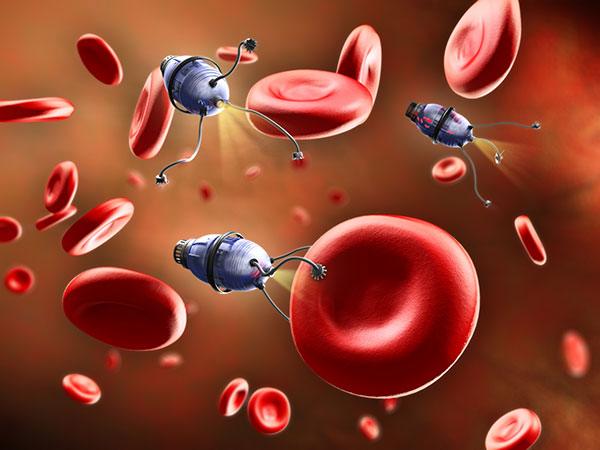A new breakthrough has been made in the world of cancer research thanks to a collaboration of researchers from Polytechnique Montreal, Universite de Montreal, and McGill University. The team has created nanorobotic agents that can travel through the bloodstream to administer drugs by specifically targeting the active cancerous cells found in tumors. This technique minimizes the risk of harming any internal organs and tissues and could pave the way for further use in medicine.
The study was published in the journal Nature Nanotechnology in an article called, “Magneto-aerotactic bacteria deliver drug-containing nanoliposomes to hypoxic tumor regions.” It goes on to explain how the nanorobotic agents consisted of more than 100 million flagellated bacteria that were loaded with drugs that moved directly to the point inside the tumor it needed to cure. Upon entering the tumor, the nanobots are able to detect the oxygen-depleted tumor areas (hypoxic zones) automatically and administer the drug there.
–
During the research, Professor Martel and his team used two natural systems to move the bacteria around. The first is a type of compass created by the synthesis of a chain of magnetic nanoparticles that allows them to move in the direction of a magnetic field. The second is a sensor measuring the oxygen concentration levels which enables them to reach and stay in the active regions of the tumors. Professor Martel is hopeful that the results of the research will enable ninon transporters to be used in the future to create more advanced engineering concepts and original intervention methods
- How do nanorobots treat cancer?
Nanorobots offer a promising approach to the treatment of cancer. These microscopic robots, often designed to operate at the nanoscale, can be programmed to target cancer cells specifically while minimizing damage to healthy cells. By delivering drugs or therapeutic agents directly to the tumor site, nanorobots can enhance the effectiveness of treatment and reduce side effects. This targeted approach allows for precise tumor destruction and improved outcomes in cancer therapy.
- Can nanotechnology cure cancer?
Nanotechnology has the potential to revolutionize cancer treatment, but it is important to note that “cure” is a complex concept when it comes to cancer. While nanotechnology alone may not provide a definitive cure, it can significantly enhance the effectiveness of existing treatments and improve patient outcomes. Nanoparticles and nanorobots, for instance, can help deliver drugs more efficiently, target tumors with greater precision, and overcome drug resistance. Therefore, nanotechnology holds great promise in advancing cancer treatment towards better control, increased survival rates, and improved quality of life for patients.
- Are nanorobots designed to destroy cancer cells?
Yes, nanorobots can be specifically designed to target and destroy cancer cells. These tiny robots can be programmed to recognize and selectively bind to cancer cells through various mechanisms, such as surface markers or specific molecules present in cancer cells. Once attached to the cancer cells, the nanorobots can deliver therapeutic payloads, such as drugs or other treatment modalities, to induce cell death or inhibit tumor growth. By precisely targeting cancer cells, nanorobots minimize damage to healthy tissues and enhance the efficacy of treatment.
- What are nanoparticles used for treating cancer?
Nanoparticles play a crucial role in cancer treatment as they offer unique advantages in drug delivery and imaging. These tiny particles, typically ranging in size from 1 to 100 nanometers, can be engineered to carry drugs, genes, or other therapeutic agents to the tumor site. They can also be designed to enhance the solubility and stability of drugs, protect them from degradation, and control their release. Additionally, nanoparticles can be functionalized with targeting ligands to specifically bind to cancer cells, improving drug accumulation at the tumor site. This targeted and controlled delivery system provided by nanoparticles holds great promise for effective cancer treatment.











